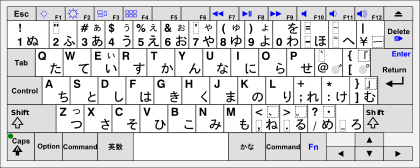Q&a Korean Ime For Mac
Contents. History Egyptian hieroglyph wj Phoenician Q Greek The sound value of was /q/ , and the form of the letter could have been based on the eye of a needle, a knot, or even a monkey with its tail hanging down. /q/ is a sound common to Semitic languages, but not found in many European languages. Some have even suggested that the form of the letter Q is even more ancient: it could have originated from.

Korean Ime Download
In, (Ϙ) probably came to represent several, among them /kʷ/ and /kʷʰ/. As a result of later sound shifts, these sounds in Greek changed to /p/ and /pʰ/ respectively. Therefore, qoppa was transformed into two letters: qoppa, which the number 90, and (Φ), which stood for the aspirated sound /pʰ/ that came to be pronounced /f/ in Modern Greek. The used Q in conjunction with V to represent /kʷ/, and this usage was copied by the Romans with the rest of their alphabet. In the earliest inscriptions, the letters C, K and Q were all used to represent the two sounds /k/ and /ɡ/, which were not differentiated in writing. Of these, Q was used before a rounded vowel (e.g. ⟨EQO⟩ 'ego'), K before /a/, and C elsewhere.
Later, the use of C (and its variant G) replaced most usages of K and Q: Q survived only to represent /k/ when immediately followed by a /w/ sound. Typography. A short trilingual text showing the proper use of the long- and short-tailed Q. The short-tailed Q is only used when the word is shorter than the tail; the long-tailed Q is even used in all-capitals text.: 77 Uppercase 'Q' Depending on the used to the letter Q, the letter's may either its as in, meet the bowl as in, or lie completely outside the bowl as in. In writing, bisecting tails are fastest to write, as they require less precision.
IeaseMusic最好的桌面应用网易云音乐播放器了,基于Electron, React, MobX, JSS开发。. AppImage 72.4 MB ieaseMusic-1.3.0-linux-x86_64.rpm 97.3 MB ieaseMusic-1.3.0-mac.dmg. Merge pull request #187 from trazyn/dev Release v1.1.8. 234 Bytes latest-mac.yml Source code (zip) Source code (tar.gz) v1.0.2. Ieasemusic ieasemusic v1.0.2 for mac. Contribute to trazyn/ieaseMusic development by creating an account on GitHub. OSX Friendly. Alfred 3 workflow(alfred-ieasemusic), required v1.2.6+ Alfred. Contribute to trazyn/ieaseMusic development by creating an account on GitHub. 'package-mac': 'npm run build && rm -rf release && build --mac --projectDir.
All three styles are considered equally valid, with most serif typefaces having a Q with a tail that meets the circle, while sans-serif typefaces are more equally split between those with bisecting tails and those without. Typefaces with a disconnected Q tail, while uncommon, have existed since at least 1529. A common method among typographers to create the shape of the Q is by simply adding a tail to the letter O.
Fonts, such as, contained two capital Qs: one with a short tail to be used in short words, and another with a long tail to be used in long words. Some early included up to 3 different Qs: a short-tailed Q, a long-tailed Q, and a long-tailed Q-u.
This print tradition was alive and well until the 19th century, when long-tailed Qs fell out of favor: even recreations of classic typefaces such as began being distributed with only short Q tails. Not a fan of long-tailed Qs, American typographer celebrated their demise in his 1922 book Printing Types, claiming that Renaissance printers made their Q tails longer and longer simply to 'outdo each other'.
Words, which are much more likely than English words to contain 'Q' as their first letter, have also been cited as the reason for their existence. The long-tailed Q had fallen completely out of use with the advent of early, as many early digital fonts could not choose different glyphs based on the word that the glyph was in, but it has seen something of a comeback with the advent of fonts and, both of which can automatically typeset the long-tailed Q when it is called for and the short-tailed Q when not. Owing to the allowable variation in the Q, the letter is a very distinctive feature of a typeface; like the, the Q is cited as a letter that gives typographers a chance to express themselves., an automated service that identifies typefaces by questions about their appearance, asks about the Q tail second if the 'sans-serif' option is chosen.
Out of Identifont's database, Q tails are divided thus.